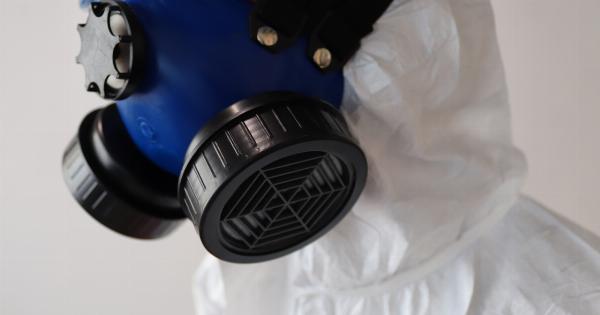Allergic rhinitis, commonly known as hay fever, affects millions of people worldwide. It is a condition characterized by inflammation of the nasal passages, resulting in symptoms such as sneezing, runny nose, itching, and congestion.
While the causes of allergic rhinitis are well-known, there is a dark side to this seemingly innocuous condition that often goes unnoticed. In this article, we will delve into the hidden dangers of common allergic rhinitis causes.
Dust Mites: The Tiny Menace
Dust mites are microscopic creatures that thrive in warm and humid environments, such as bedding, upholstery, and carpets. For individuals with allergic rhinitis, their presence can trigger severe symptoms.
Dust mites produce waste products that can cause allergic reactions, leading to respiratory distress and discomfort.
Pollen: Nature’s Silent Enemy
Pollen, a powdery substance produced by plants for reproduction, is a common trigger for allergic rhinitis. It is easily carried by the wind, making it difficult to avoid.
For those with allergies, exposure to pollen can result in persistent nasal congestion, sneezing fits, and itchy eyes. Prolonged exposure can also lead to asthma exacerbations in some individuals.
Mold Spores: The Hidden Culprit
Mold spores are airborne fungi that can cause allergic reactions when inhaled. They thrive in damp and humid environments, such as bathrooms, basements, and kitchen areas.
Individuals with allergic rhinitis may experience worsening symptoms when exposed to mold spores, including nasal congestion, coughing, and wheezing.
Pet Dander: A Furry Trigger
For those with allergic rhinitis, pet dander can be a major source of discomfort. It refers to the tiny flecks of skin shed by animals, such as cats and dogs, as well as their saliva and urine.
These allergens can easily become airborne, triggering sneezing, itching, and congestion in sensitive individuals.
Cockroaches: Unwelcome Housemates
Cockroaches are not only unsightly pests but also a common cause of allergic reactions. Their droppings, saliva, and decomposing body parts contain allergenic proteins that can trigger symptoms in individuals with allergic rhinitis.
Exposure to cockroach allergens can lead to nasal congestion, itchy skin, and respiratory distress.
Chemical Irritants: Harmful Airborne Substances
Chemical irritants such as cleaning products, perfumes, and smoke can worsen symptoms of allergic rhinitis. These substances can irritate the nasal passages, leading to increased congestion, sneezing, and discomfort.
Individuals with allergic rhinitis should be cautious when exposed to such irritants to avoid exacerbating their symptoms.
Air Pollution: A Modern Menace
Increasing levels of air pollution have become a significant concern for individuals with allergic rhinitis.
Pollutants, such as fine particulate matter and nitrogen dioxide, can aggravate existing symptoms and even increase the risk of developing allergies. Living in heavily polluted areas may expose individuals to a higher likelihood of experiencing severe allergic rhinitis symptoms.
Food Allergens: Underestimated Triggers
Although allergic rhinitis primarily affects the respiratory system, certain food allergens can also contribute to its symptoms.
Some individuals may experience cross-reactivity between pollen and certain fruits and vegetables, leading to oral allergy syndrome. This condition results in itching and swelling of the mouth and throat after consuming specific foods.
Stress and Allergic Rhinitis
While not a direct cause, stress can exacerbate symptoms of allergic rhinitis. When under stress, the body releases stress hormones that can trigger inflammation and worsen existing symptoms.
Additionally, stress can weaken the immune system, making individuals more susceptible to allergic reactions.
Climate Change and Allergic Rhinitis
Climate change can also impact the prevalence and severity of allergic rhinitis.
Rising temperatures and increased carbon dioxide levels can lead to prolonged pollen seasons, heightened pollen production, and the introduction of new allergenic plants in certain areas. These changes can significantly affect individuals with allergic rhinitis, exacerbating their symptoms and reducing their quality of life.






























